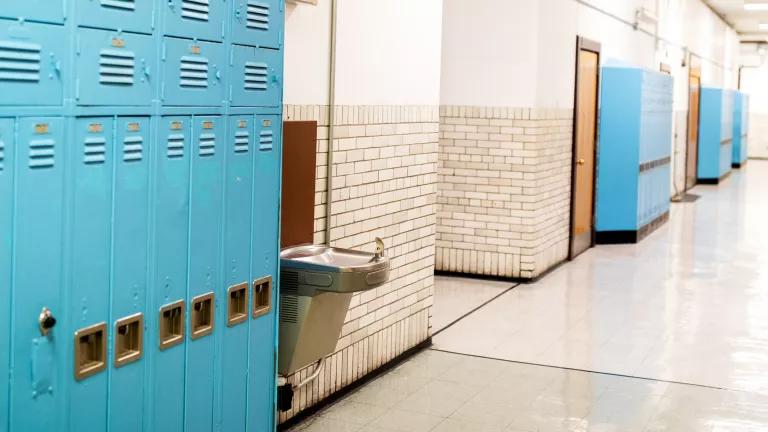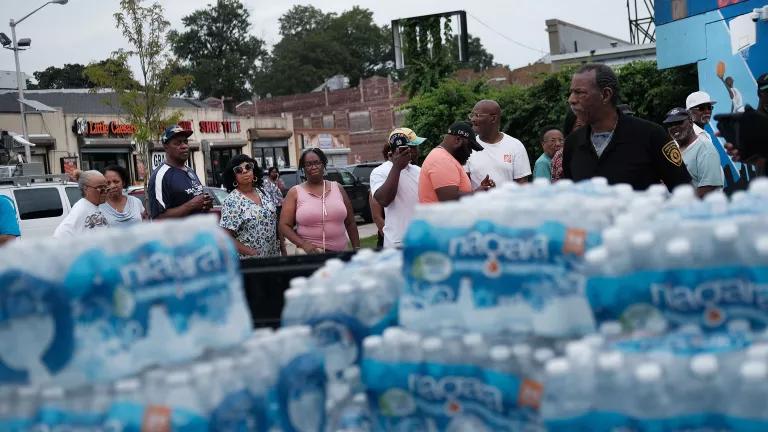Back-to-School: Lead in Drinking Water Questions Answered
Tips on how parents can make sure their child’s drinking water at school is lead-free.

Parents of schoolchildren who live in communities with lead in residential drinking water are understandably concerned about the safety of the drinking water in their children's schools. Lead is a very toxic, heavy metal, and it impairs life learning for kids. It's irreversible, and children will have problems throughout their lives if they're highly exposed to lead in drinking water in schools. So when schools test at high levels of lead in drinking water, parents wonder what that means for their drinking water at home. Here are answers to three commonly asked questions, followed by tips for parents for the coming school year.
If there are high levels of lead in drinking water in homes, what does that mean for the levels of lead in the drinking water of nearby schools?
It could mean that those levels of lead in drinking water are elevated as well. If the lead in homes is happening because of inadequate corrosion control, which can dislodge or leach lead from lead service lines or household plumbing, that can happen in schools too. Although schools generally do not have lead service lines, some smaller schools may have them, and all schools have plumbing, fixtures, and solder that contain some lead. Additionally, day care centers can have lead service lines in addition to lead in plumbing, fixtures, and solder, which pose a risk to the children if there is inadequate corrosion control in the water source.
If there are high levels of lead in drinking water in schools, what does that mean for the levels of lead in the drinking water at home?
If schools have elevated levels of lead in their drinking water, it could be an indication that corrosion control at the water system is inadequate and residences should be tested.
What can parents do?
As the school year approaches, parents can play a critical role in protecting their children’s health by making sure lead-free drinking water free is on their back-to-school checklists.
Most parents assume the drinking water in their children’s schools is safe, but unfortunately, that’s not always true. Many schools and childcare centers are housed in old buildings with aging plumbing fixtures and pipes that contain lead, which can leach into the drinking water.
There is no safe level of lead exposure for children. Young children are particularly vulnerable to the effects of lead, which can decrease a child’s cognitive capacity, cause behavioral problems, and limit the ability to concentrate—all of which affect lifetime learning. The American Academy of Pediatrics recommends that lead levels in school drinking water should not exceed 1 part per billion (ppb).
Here are five tips for keeping kids safe from lead-tainted water in schools:
- Send your kids to school with water from a filtered source daily. Get a reusable container or bottle and run it through a filter certified to reduce lead by the NSF International or Water Quality Association (WQA).
- Ask the school principal whether the drinking water has been tested for lead and ask for the results.
- Advocate that your school or the school district install NSF International- or WQA-certified filters to remove lead from drinking water fountains and taps.
- Spread the word about safe water concerns by talking to your child’s teacher, the school nurse, and your parent-teacher organization. When the parents start talking to each other and they are coordinated and organized within the parent teacher organization, they can leverage their power and find information.
- Talk to your pediatrician about your concerns regarding lead in drinking water—let them know that the American Academy of Pediatrics recommends that school drinking water should not contain more than 1 ppb of lead.



